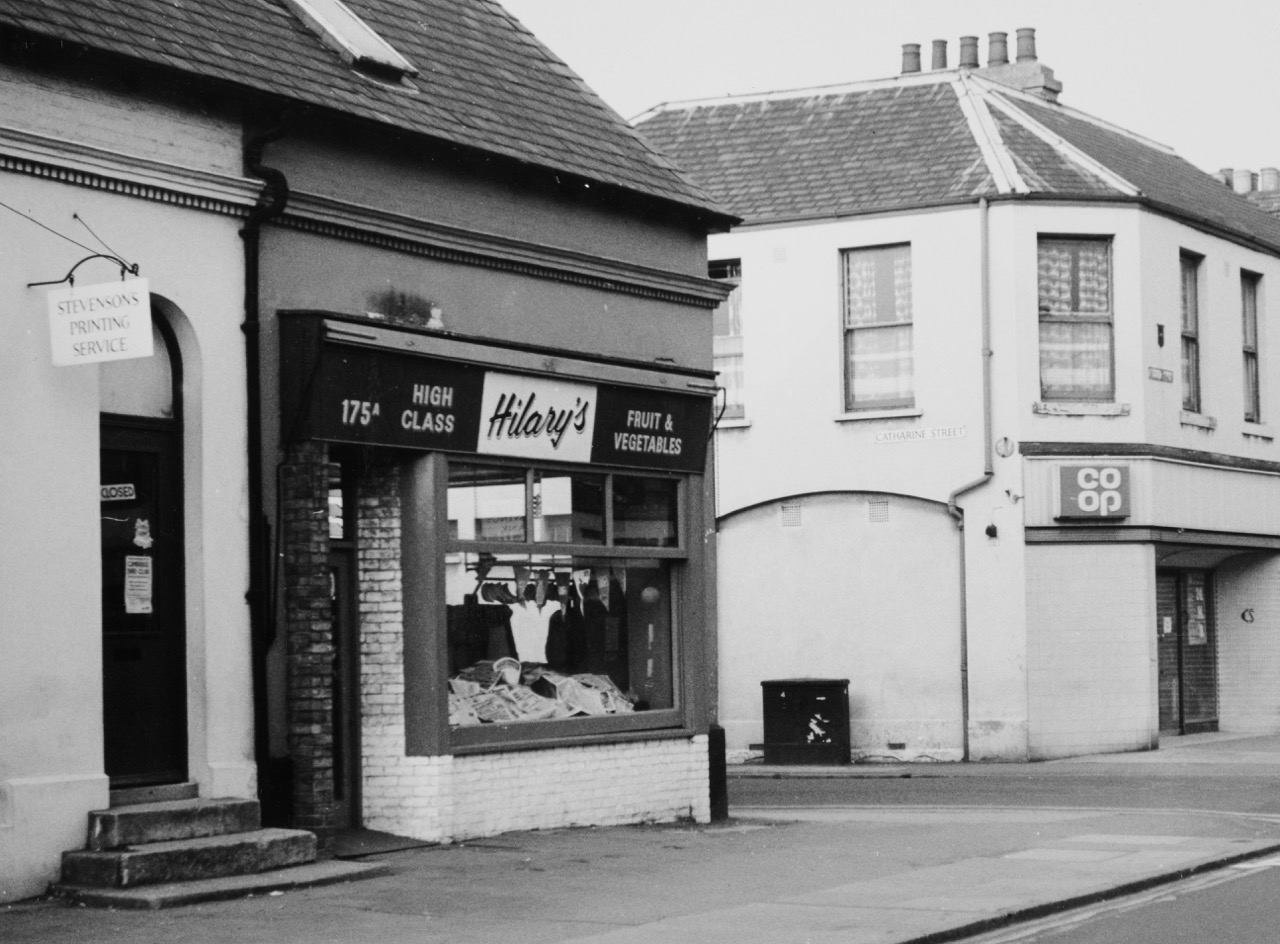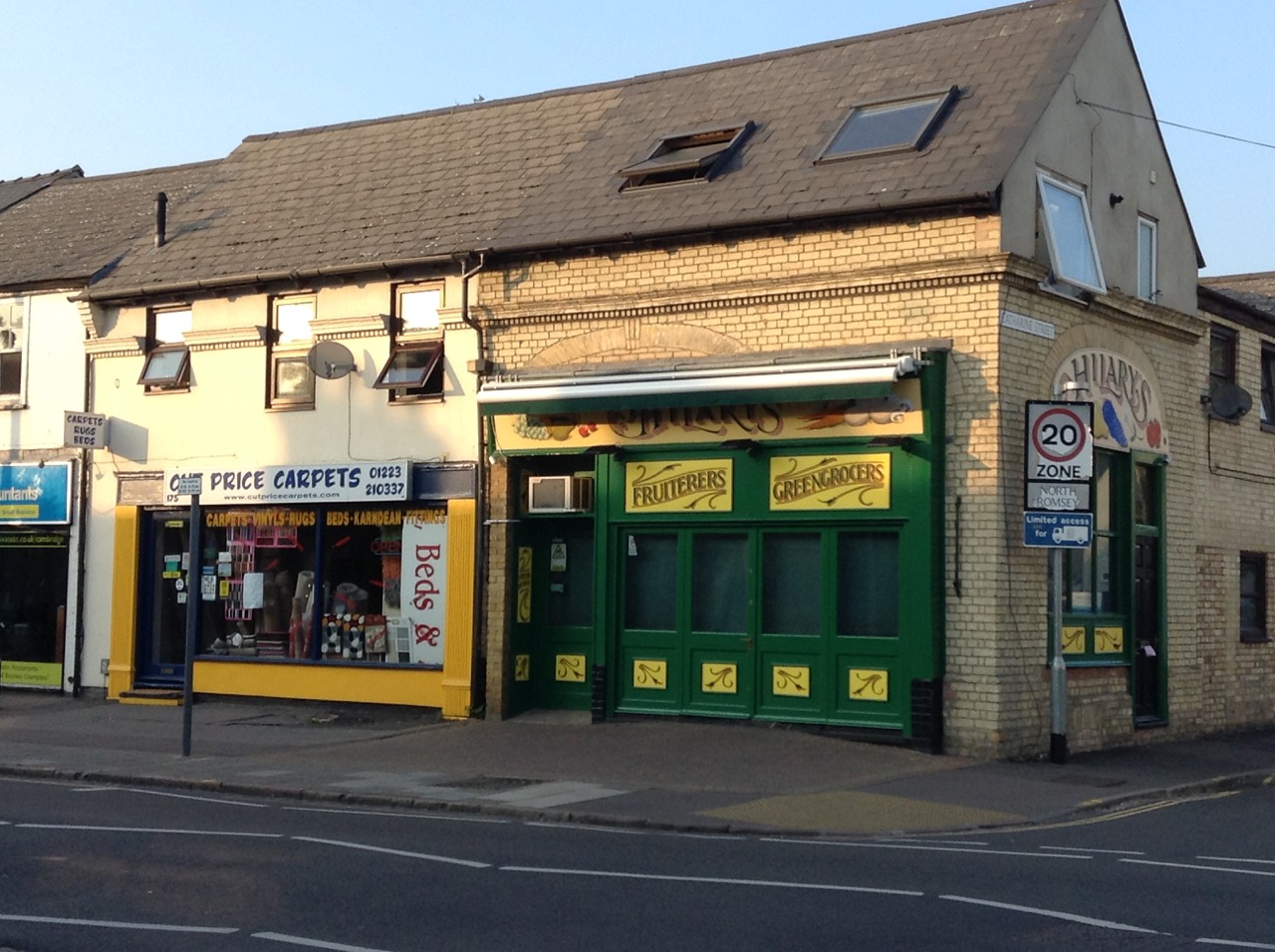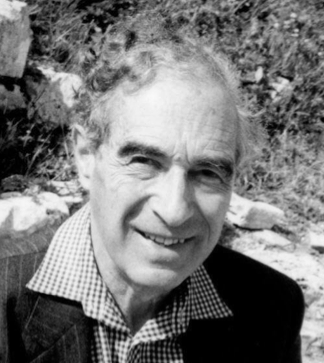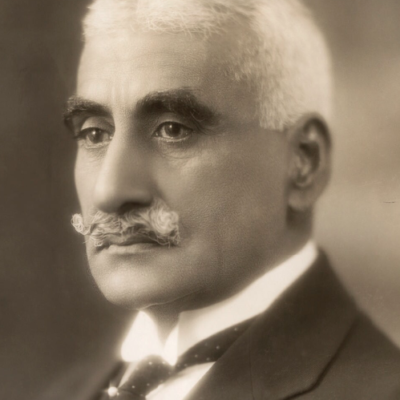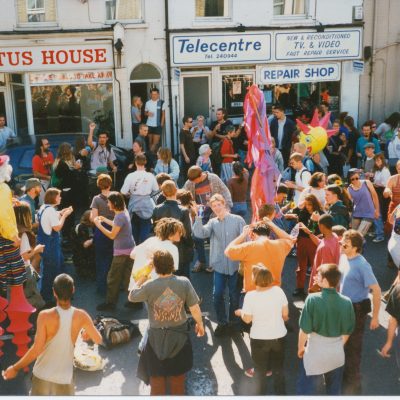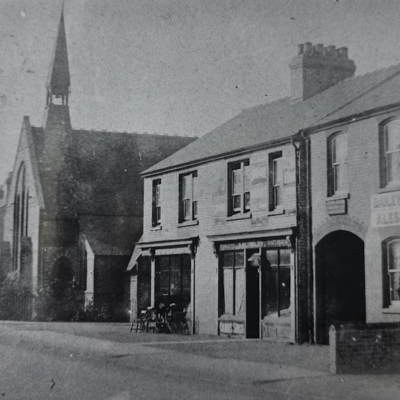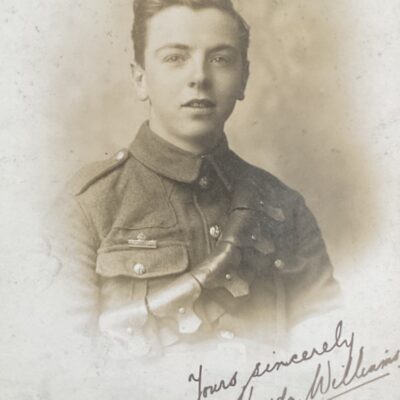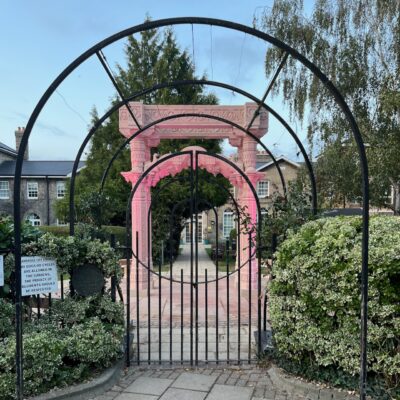Search by topic
- archaeology
- Building of Local Interest
- charity
- church
- crime
- dressmaker
- fire
- Great Eastern Railway
- Listed building
- Mapping Relief
- medieval
- oral history
- poverty
- Public House
- Rattee & Kett
- Religious House
- Roman
- scholar
- school
- Then and Now
- tudor
- women
- work
- world war one
- world war two
Search by text
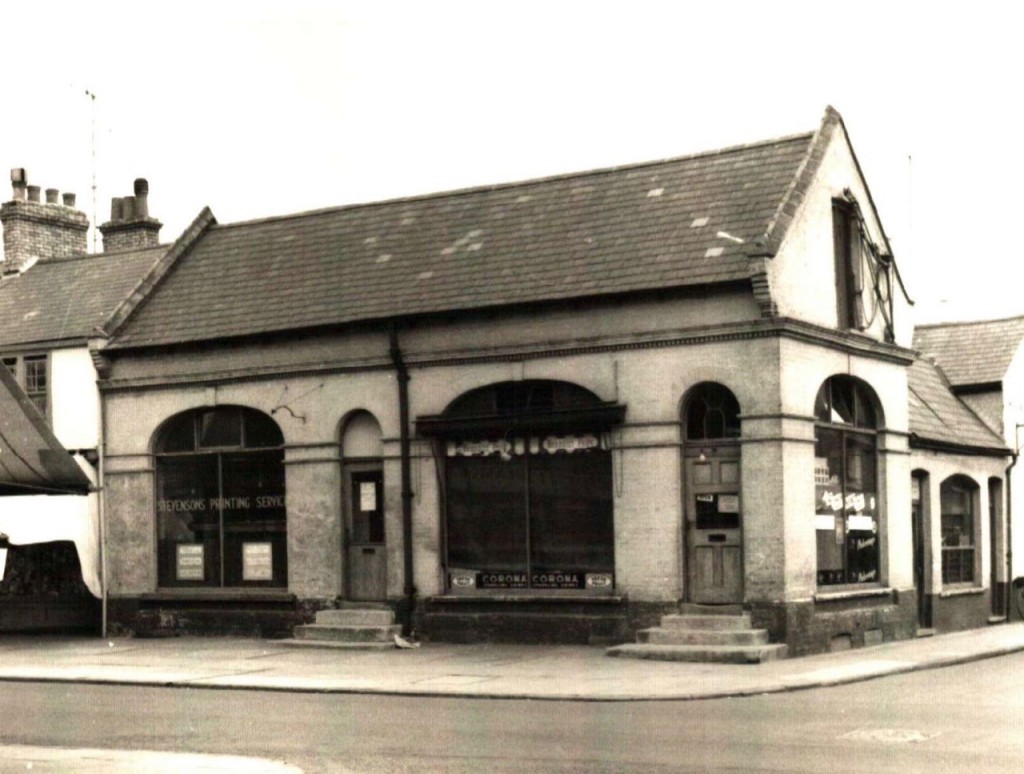
177 & 175 (175a, 175b) Mill Road
Corn, fruit and carpets
No. 177 -175 Mill Road was erected at a time when many new houses and businesses were being built to serve the burgeoning community on the Romsey side of the bridge. Originally built as a corn merchants and bakery, it has changed hands several times but the type of produce traded has not changed drastically – raw food in the form of grains and fruit and vegetables seems to be a continuous theme. Fruit and vegetables have been sold on the premises since its beginnings, and beer from 1895 till the 1980s when part of it was an off-licence. Corn and grain were traded there for the first fifty years of its existence. From around 1937 two separate businesses have traded from the building.
Read the complete building report (PDF)
Watch Caro Wilson talk about the history of 177-175.
Did you know
Frank Waters, the architect, also designed the Cattle Market on Cherry Hinton Road (the site of the present Leisure Park) and the Mill Road Library and was co-designer of Victoria Bridge.
The advertisement for a manager for the bakery and corn business in 1885 specified that it had to be married man.
Timeline (UK Census and Cambridge Directories)
1887 Unicorn Trading Company
1895–1904 Brewers & Beer Retailers (Jarman & Co.)
1895–c.1934 Corn And Seed Merchant (George Henry French)
1909 Frederick Dale, Brewer
East Side (175a,177)
1901 unoccupied
1913 George Henry French, corn and seed merchant
1936 P. S. Whitehead, fruiterer
1937 (175a) Lily Florence Whitehead, printer
1955 E. Ward, fruiterer
1962 – 1970 (175a) J. W. Christenssen, fruiterer & greengrocer
1978 Hilary’s, greengrocer
2014 (177) Hilary’s
West Side (175)
1901 unoccupied
1913 George Henry French, corn and seed merchant
1937 Peterborough Radion Co. Ltd, radio engineers
1948 Upholsterer (Arthur Ambrose)
1953 Stevenson’s Printing Service
1962 – 1970 (175b) Stevenson’s Printing Service
1988 Coral, bookmaker
2000 Cut Price Carpets
Building Description
The building occupies the corner of Catharine Street and Mill Road and has undergone several modifications since it was built. The original building has been divided into two separate shop units: currently Cut Price Carpets (175 Mill Road) and Hilary’s Greengrocer’s (175a). Like most of the buildings in the area it is constructed from Cambridge bricks under a pitched slate roof. There are two sky-light windows above the greengrocer’s. Below the roof is a decorative stringcourse of bricks. The gable end comprising two modern windows on the upper storey and the remnants of an arched window beneath, faces Catharine Street. There is a cellar running the width of both shops with a wall dividing the two. Traces of the cellar aperture, with curved brick lintel are visible on the Catharine Street side of the building.
Adjoining the building in Catharine Street is a small two-storey residence with a flat roof, modern windows and evidence of a bricked-up door. Adjoining this is a pitched roof residence. Both these buildings are residential properties occupying part of the original site of No. 175 Mill Road.
Break-in at the Unicorn Bakery
A press report from February 1889 tells the story of a break-in by three local schoolboys. At the Cambridge Borough Police Court they were charged with breaking into the premises of the Unicorn Trading Company and stealing money from the till (£4.3s) belonging to Robert Martin Ivatt. They were also charged with breaking into A. W. Goode’s butcher’s shop in Catharine Street and stealing meat, a knife and a key, on the same evening.
The extract below is a part of a statement provided by one of the boys (George Burton, aged 12).
Yesterday, myself, brother Robert and William Taylor instead of going to school (St Paul’s Russell-street) we decided to break into the Unicorn Trading Company’s shop in Mill-road, corner of Catherine-street. We played in the fields in St Philip’s-road till it was dark. About seven we went into a butcher’s shop (Mr. Goode’s) corner of St. Phillip’s Road. The shop was locked up. Mr Goode having another shop in Gwydir-street. We pulled the cellar grate up, went into the back room attached to the shop, and lighted a fire. We got some meat cooked it and ate it. We stopped there until about twelve o’clock. I took a knife from there.
We then went to the Unicorn Shop in Mill-road (corn and beer sellers). Mr Searle is the manager and we knew he lived in Catherine-street and that no-one slept in the shop. The cellar grate was off. We all got down into the cellar and found the door fastened. We then returned, and went to the back of the shop, and all of us picked the putty out of the frame of one pane, which we removed and entered the shop. We knew the money was placed in a drawer, in a little office which had no door to it. The drawer was not locked. I opened it and we took the money. We each kept what we got. I don’t know how much. There was no gold, but a lot of silver, and some coppers, including a lot of farthings. We took the silver and some of the copper, but left most of the copper. We found some Banbury cakes on the counter and had one each.
The boys then took a train to London and spent some of the stolen money on coffee, food and a cap and pair boots each. The brothers intended to travel to Yarmouth to try and go to sea however they were all stopped at Finsbury Park Station. They were sentenced to gaol for fourteen days with hard labour and then to a reformatory for five years.
More Information
Contribute
Do you have any information about the people or places in this article? If so, then please let us know using the Contact page or by emailing capturingcambridge@
License
This work is licensed under CC BY-NC-SA 4.0





